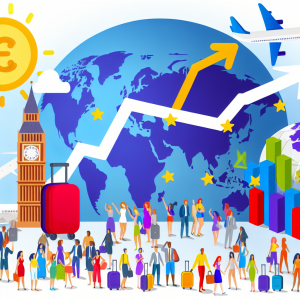Travelers Beware: The Dollar’s Dive Is Reshaping International Travel — What Investors and Advisors Must Know Now
If you’re an American with itchy feet, ready to jet off to Europe or beyond, you might be in for a surprise at the currency exchange counter. While last-minute airfare deals to hotspots like London or Rome have become more affordable—airlines have slashed prices by 10-13% compared to last year—the value of the U.S. dollar abroad is taking a hit that could overshadow these savings.
The dollar index, a key measure of the greenback’s strength against major currencies, has plummeted 10.3% in just the first half of 2024, marking its worst performance since 1973. This steep decline is largely tied to ongoing geopolitical tensions and trade wars, notably those initiated during the Trump administration, which continue to ripple through global markets. As a result, the euro now buys roughly $0.85, down from $0.93 a year ago, while the British pound has dropped about 6 cents since early July.
What does this mean for travelers? A £100 theater ticket in London, which cost $135 in June, now demands $137. A three-night stay in Barcelona, priced at €850 last month (around $965), now costs over $1,000. These currency shifts may seem incremental but add up quickly during a full trip.
Yet, there’s a silver lining: airfare prices have normalized to pre-pandemic levels, encouraging more Americans to travel abroad. According to Tourism Economics, U.S. travelers returning through major airports increased by about 2% year-over-year in late June, signaling robust outbound travel demand despite economic headwinds.
Here’s the kicker: consumer finance experts emphasize that the dollar’s weakness isn’t the primary factor deterring international travel. Greg McBride, chief financial analyst at Bankrate, points out that cancellations are more often driven by fears of job security, geopolitical uncertainty, or the high cost of credit—not currency fluctuations. This insight is critical for investors and advisors alike, as it underscores the broader economic anxiety that could dampen discretionary spending and travel-related sectors.
Looking beyond the numbers, there’s a nuanced consumer behavior trend emerging. Millennials are increasingly eyeing international destinations despite higher costs, favoring regions like South and Central America, the Caribbean, and northern Europe. Meanwhile, affluent travelers continue to chase “bucket-list” experiences, albeit with a more strategic approach—trimming flight costs, optimizing itineraries, and prioritizing curated, meaningful experiences over extravagance. Mandee Migliaccio, CEO of Stepping Out Travel Services, notes this shift toward efficiency and value, a trend investors might want to watch closely in the luxury travel market.
For financial advisors and investors, this evolving landscape offers actionable insights:
-
Diversify Travel-Related Investments: With airfare prices stabilizing but currency volatility persisting, companies that offer flexible pricing, currency hedging, or cater to affluent travelers focusing on curated experiences may outperform.
-
Monitor Consumer Sentiment Closely: Economic uncertainty and geopolitical risks weigh heavily on travel decisions. Tracking these factors can help anticipate shifts in consumer spending patterns, impacting sectors from airlines to luxury goods.
-
Capitalize on Millennial Travel Trends: Younger travelers’ growing interest in international trips—especially to emerging markets in Latin America and Europe—could signal opportunities in travel tech, experiential tourism, and regional travel infrastructure investments.
-
Prepare for Currency Volatility: For investors with exposure to multinational companies or travel-related assets, hedging strategies against dollar fluctuations could mitigate risk in the near term.
A recent study from Morning Consult found that 31% of consumers cite economic and financial pressures as their top deterrent to leisure travel in the coming months, surpassing concerns about geopolitical issues or health. This underscores a critical pivot point: the health of the U.S. economy and household balance sheets will be the ultimate arbiter of travel demand.
Looking ahead, while some analysts predict a partial dollar rebound in the latter half of 2024, the current environment calls for vigilance and adaptability. Investors should keep an eye on Federal Reserve policies, trade negotiations, and global political developments that could influence currency markets and consumer confidence.
In essence, the travel sector is navigating a complex interplay of cheaper flights, weaker dollars, and economic uncertainty. For investors and advisors, the key lies in reading these signals early and positioning portfolios to benefit from shifting consumer preferences and macroeconomic trends.
Unique Insight: According to a recent survey by Future Partners, 47% of Americans plan to travel internationally within the next year, but 35% have already reconsidered or delayed plans due to U.S. policy uncertainty. This statistic highlights a critical, often overlooked factor: political stability and clear policy direction are now as vital to travel and investment confidence as traditional economic indicators.
What’s Next? Stay informed on currency trends, consumer sentiment, and geopolitical developments. For advisors, this means proactively discussing travel and discretionary spending plans with clients, factoring in economic risks, and exploring travel-related investment opportunities that align with evolving consumer behaviors.
By understanding these dynamics, investors can not only weather the storm of a weaker dollar but also capitalize on the resilient and adaptive nature of the global travel market. Stay tuned to Extreme Investor Network for the latest insights that keep you ahead of the curve.
Source: Europe summer travel costs

